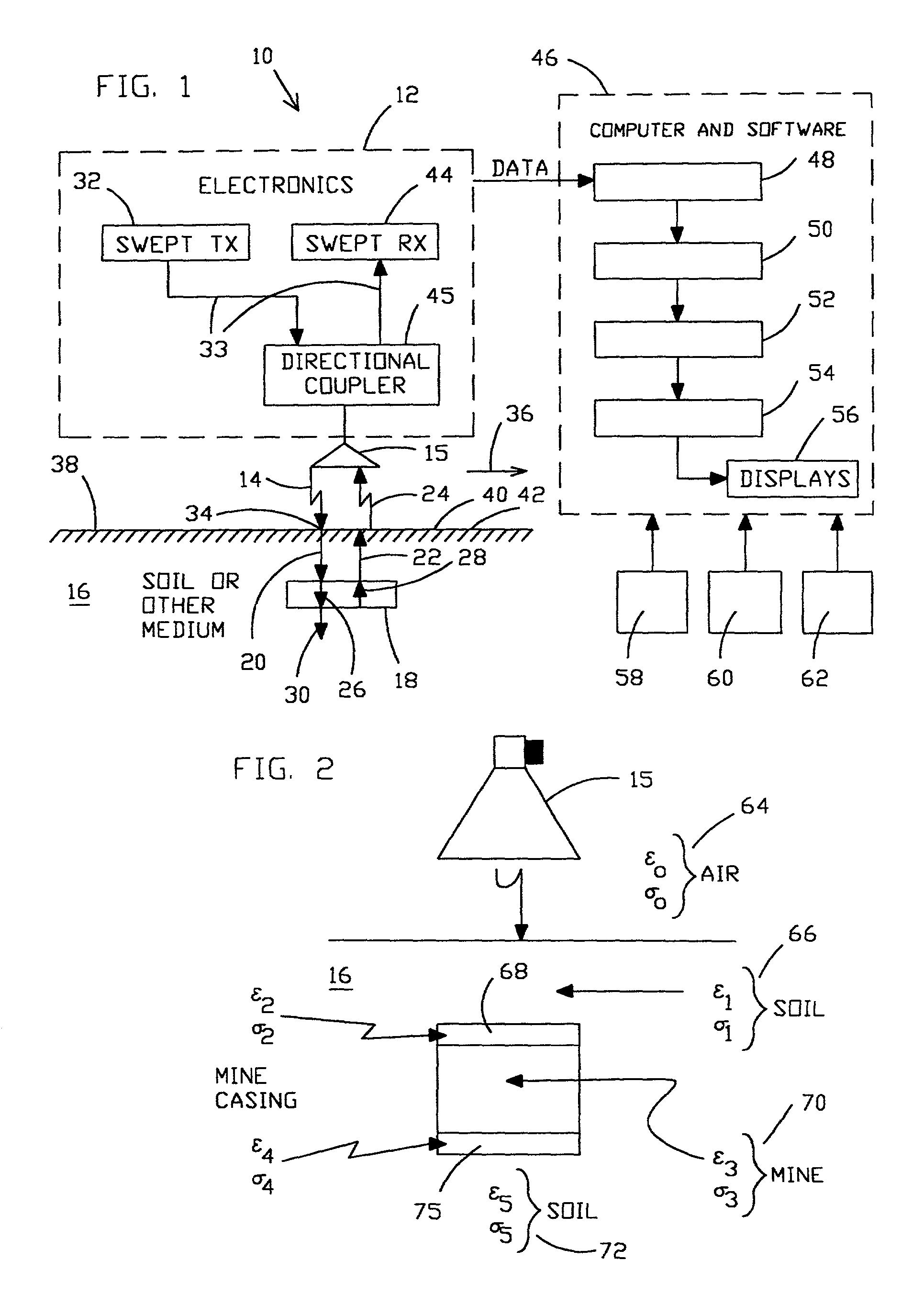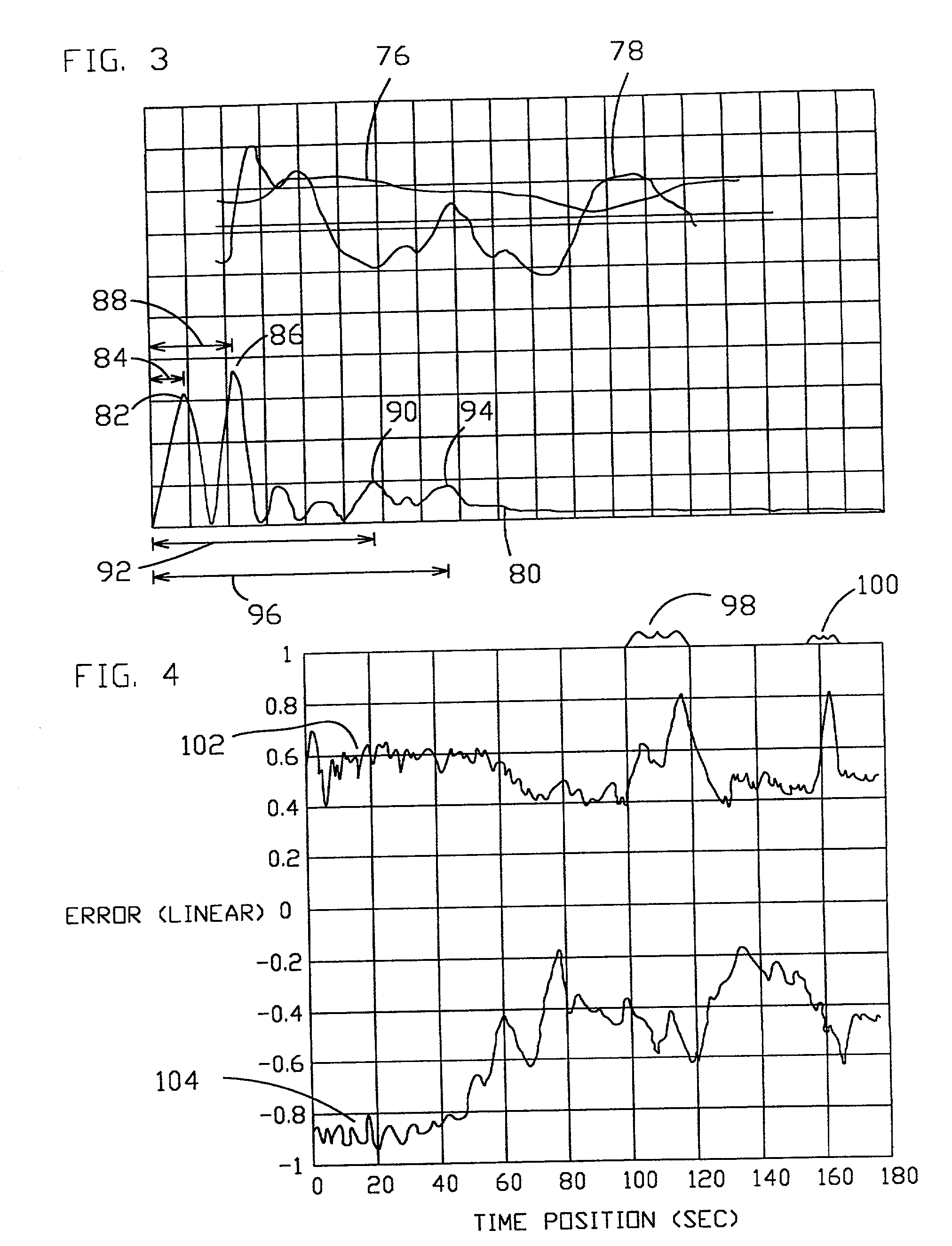Method for locating a concealed object
a concealed object and method technology, applied in the field of methods for locating concealed objects, can solve the problems of unreliable systems for detecting plastic or nonferrous objects, little real-world detection success for small objects, and difficulty in separating plastic and nonferrous materials electromagnetically
- Summary
- Abstract
- Description
- Claims
- Application Information
AI Technical Summary
Benefits of technology
Problems solved by technology
Method used
Image
Examples
Embodiment Construction
[0050] The present invention provides apparatus and methods for locating anomalies in microwave penetrable material, e.g., locating plastic mines or plastic (PVC) pipe in soil. Other concealed objects besides plastic mines can be located with the present invention. For example, an object encased in concrete may be detected. Also, the thickness of a concrete floor can be determined and, in some cases, the depth of a plastic pipeline and the diameter of the pipeline can be determined. Also, the fluid in the pipeline can be determined with a certain a priori knowledge. As discussed above, locating anomalies in microwave penetrable material will encompass locating different types of concealed objects or structures.
[0051] Referring now to the drawings and, more particularly, to FIG. 1 there is shown a transmitter / processor 10 in accord with the present invention. Electronics section 12 transmits broad band microwave signal 14 from antenna 15 directed into ground or soil 16 where an objec...
PUM
 Login to View More
Login to View More Abstract
Description
Claims
Application Information
 Login to View More
Login to View More - R&D
- Intellectual Property
- Life Sciences
- Materials
- Tech Scout
- Unparalleled Data Quality
- Higher Quality Content
- 60% Fewer Hallucinations
Browse by: Latest US Patents, China's latest patents, Technical Efficacy Thesaurus, Application Domain, Technology Topic, Popular Technical Reports.
© 2025 PatSnap. All rights reserved.Legal|Privacy policy|Modern Slavery Act Transparency Statement|Sitemap|About US| Contact US: help@patsnap.com



